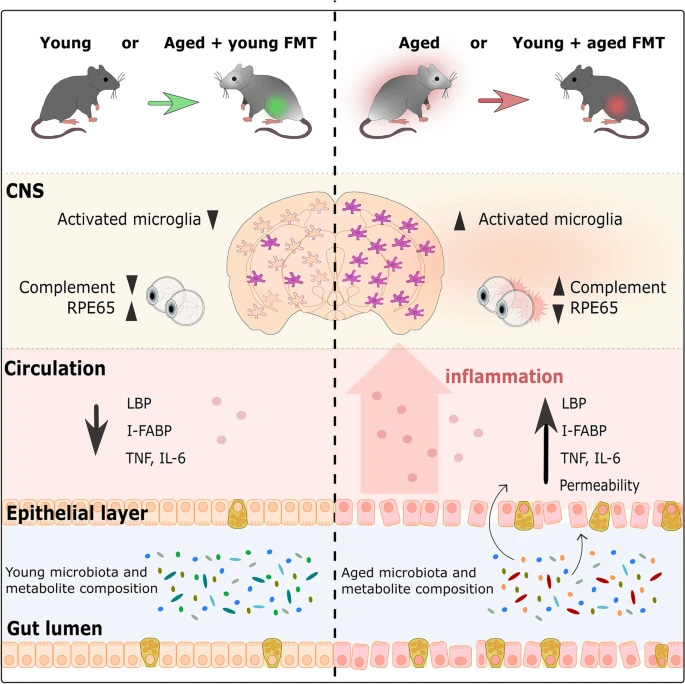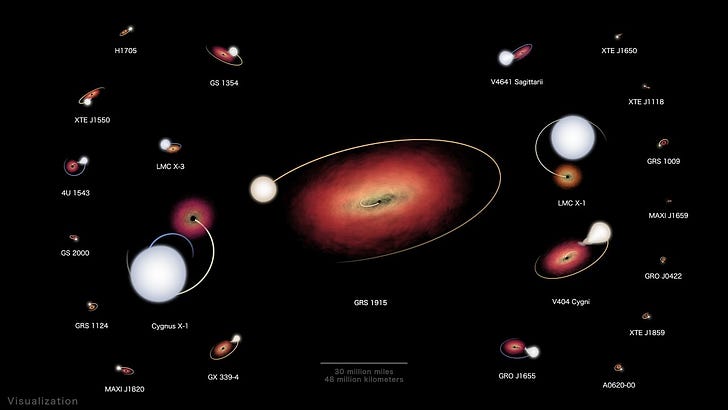To the Stars with Data: May 8 2022
Catching a rocket with a helicopter, black holes and stars orbiting together, fecal transplants reducing aging symptoms, and much more
Hello Datanauts!
For those of you who loved the wombat article from last week, here’s an article about the badasses that are mantis shrimp. Enjoy!
Now, let’s go to the stars with data!
Thought-Provoking Data Viz

🎲 Can you reach Net Zero?
Quick hits. The Financial Times created The Climate Game, a choose-your-own-adventure game that pits players against climate change to see if they can reach Net Zero by 2050. (Net Zero is when humanity has reduced their emissions of greenhouse gases close to zero and any remaining amount released into the atmosphere is offset by absorbing the equivalent.) In the game, players have finite resources to deploy across various policies affecting industries, governments, and the way people live. Can you reach Net Zero? It’s tougher than it seems!
Digging deeper. Once you finish the game and your results are scored, you’ll find that only 1 in 3 end up achieving below 1.5C degrees of global warming (our current goal, based on the Paris Climate Accord from 2015). Though the game might appear simple at the outset, it ingeniously integrates a number of real-world implications. For instance, the “effort point” component signifies the finite attention and funding available to world leaders to combat climate chnage. Additionally, establishing far-reaching, yet necessary, policy changes early in the game (within the next few years in the real world) makes decisions later in the game easier. The data behind the game is also very complex, integrating models from the International Energy Agency, MAGICC7+, and climate scientists.
Earth News

🐁 Fecal transplant in mice reduces signs of aging
Oh jeez, I can’t believe I’m talking about feces. But hear me out, this is super interesting stuff!
Quick hits. When researchers recently transplanted fecal microbiota (AKA feces) from young mice into older mice, they observed reduced signs of natural aging. Specifically, the older recipients exhibited reduced inflammation in their central nervous systems, reduced inflammation in their retinas, and an increased production of a key protein in their eyes. Interestingly, when the fecal microbiota from older mice was transplanted into younger mice, the signs were reversed!
Digging deeper. Fecal microbiota transplants (FMT) have been around for a long time. According to the US Department of Veterans Affairs, a fourth-century medical doctor, Ge Hong, treated diarrhea with “yellow soup”, or water mixed with feces from a healthy individual. In modern times, medical professionals rely on FMT to treat conditions in the microbiome, such as a Clostridioides difficile infection or ulcerative colitis. Naturally, FMT has also been present in pop culture because it’s both gross and remarkably effective; one example is an FMT-focused episode of South Park.
Other Earth news
🤖 Researchers build AI to differentiate animals & understand and track their behavior over time. The AI can detect different behaviors such as those linked to stress, fear, curiosity, and more. For the nerds out there, here’s the paper and the source code.
🏭 The US Department of Energy has given conditional approval for a $504m loan for a green hydrogen hub in Utah. Hydrogen, a power source with huge potential, is colored based on how it’s created. Naturally, green indicates that it’s created with renewable energy.
🩺 Researchers studied the genomes of over 18,500 tumors—the largest number to date—to find signatures across cancers. Signatures are important because they distinguish cancers from one another and provide structures to target when creating cures or treatments. The researchers found an astounding 58 additional signatures to the list of signatures already known.
Space News
🕳 NASA releases a visualization of 22 known black hole binary systems
Quick hits. NASA recently released a stunning visualization of 22 known black hole binary systems within the Milky Way or Large Magellanic Cloud, one of the Milky Way’s closest neighboring galaxies. (Black hole binaries are star systems with two primary bodies, one of which is a black hole.) Particularly astute readers may recognize that the colors of the black hole accretion discs (the red/orange discs around the black holes) have been altered even though the stars’ colors have not. Normally, the black hole accretion discs would be blindingly bright compared to their star, so I’m thankful for the change. The visualization contains famous black hole binaries like Cygnus X-1, which is 7,200 light-years away from us and is the first known black hole, and MAXI J1659, which is 29,000 light-years away from us and is the fastest known orbit of an accreting black hole.
🚁 Rocket Lab catches a rocket booster in midair with a helicopter
Quick hits. Rocket Lab officially caught their rocket, Electron, in midair with a helicopter (a world first). 😱 Electron wasn’t built to be reusable, so to get into the reusable rocket game, Rocket Lab had to “retrofit” a reusable solution onto the rocket. So, naturally, they caught it in midair with a helicopter. 🤷♂️ Their larger and newer launch vehicle currently in production, Neutron, will make a propulsive return to its launch site, which should be safer than catching it with a helicopter given the lack of human interaction and its associated risk.
🌠 NASA released their official trailer for its Psyche mission
Quick hits. Earlier this week, NASA released their official trailer for its Psyche mission. During the mission, a spacecraft will visit its namesake, Psyche, an asteroid in the asteroid belt between Mars and Jupiter. The science community is particularly interested in Psyche because it is believed to be the core of a planetesimal, or the small building blocks of planets that existed while our solar system was forming from its accretion disc. Because we can’t see the cores of other planets with current technology, this will grant us a unique opportunity to understand a large number of traits of our solar system and its planets.
Other space news
🌠 Speaking of asteroids, researchers find 1,701 new asteroid trails in 20 years of Hubble data with the help of citizen scientists and AI. The citizen scientists helped through Zooniverse, an awesome platform that allows anyone with an internet connection to contribute to science.
🔬 Speaking of citizen science, the European Space Agency’s (ESA) Camaliot allows Android users to contribute to better weather tracking. The app, which can run in the foreground or background, collects GPS signals from satellites and helps measure the signals’ distortion as they move through the atmosphere. ESA plans to tackle the data with machine learning models to improve its tracking of weather patterns.
Future-Thinking Companies

♻ Plasticback
Based in Israel, Plasticback breaks down plastics into oils, waxes, and other valuable chemicals in small room-temperature conversion units (5m x 5m). Considering that the current alternatives for doing so require very hot and very large units, this is a step in the right direction to achieving an infinitely-recycled plastic.

🌊 Idenergie
Based in Montreal, Idenergie makes a water turbine that generates up to 12kWh of energy per day (as much as 12 solar panels, the company claims). The turbine is minimal (thus doesn’t disturb marine environments), made from aluminum (thus easy to recycle), and even ships in separate parts to save on transport costs and space.


